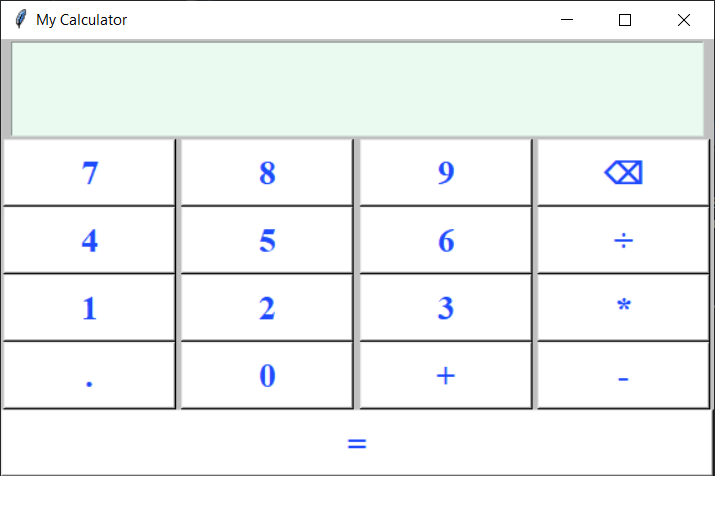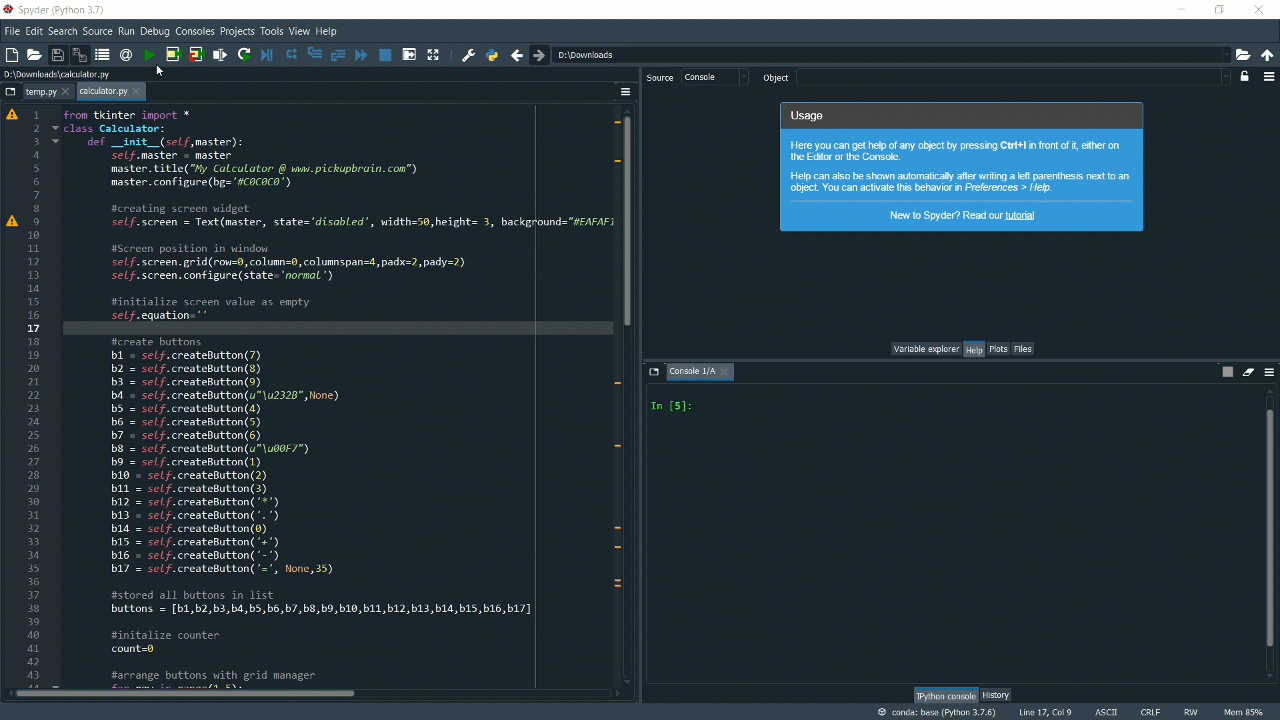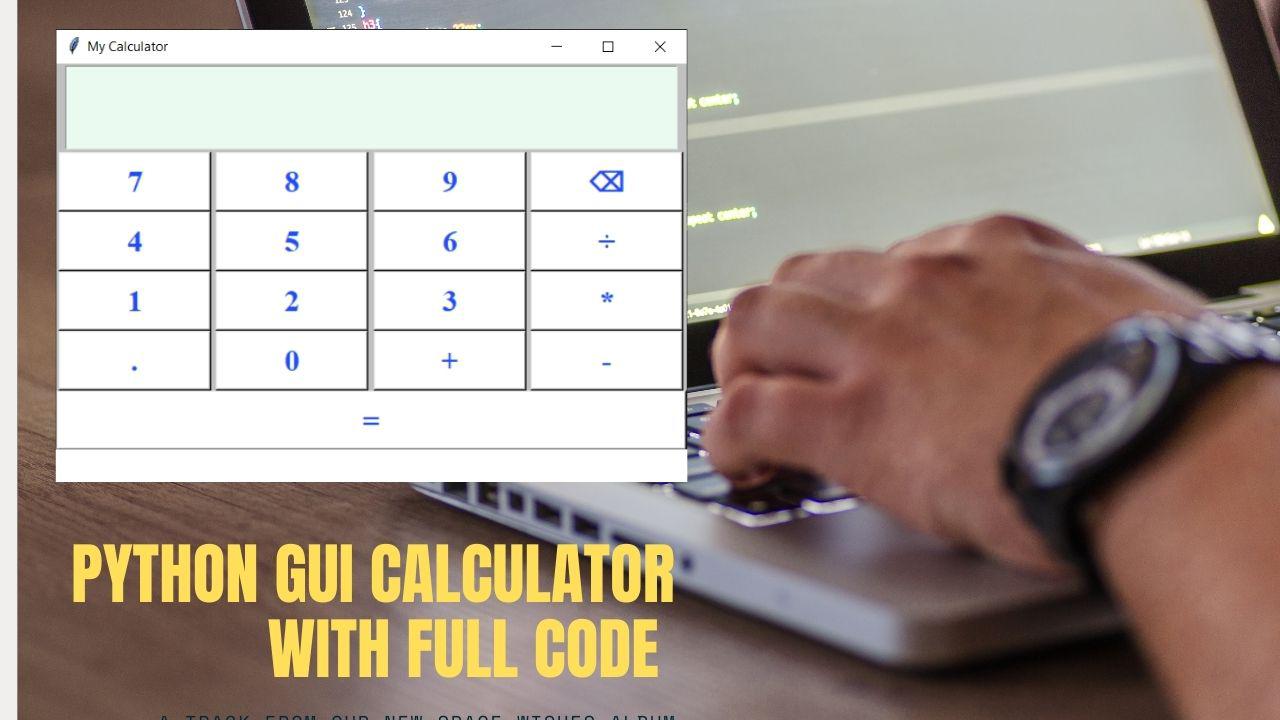Python is the most talk about general purpose programming language. It is the language of choice from simple data manipulation to Big data analysis, web development to desktop application, artificial intelligence to Machine learning. Learning Python gets really fun with real life application. In this blog we will build a real life Python desktop application, a GUI calculator.
Python GUI Calculator
The GUI calculator that we will build using Python look as follows.

Requirement for GUI Calculator
The only requirement is Python 3 and Tkinter package. It is one of the most popular Python library for creating GUI application. Most of the latest version of Python3 comes with Tkinter.
To check if Tkinter is installed properly, run the following command in Python.
import tkinter
If the above code runs without error, then you meet all the pre-requisite for making GUI calculator.
Demo of Working GUI Calculator.

Complete Python3 code for GUI calculator
from tkinter import *
class Calculator:
def __init__(self,master):
self.master = master
master.title("My Calculator @ pickupbrain.com")
master.configure(bg='#C0C0C0')
#creating screen widget
self.screen = Text(master, state='disabled', width=50,height= 3, background="#EAFAF1", foreground="#000000",font=("Arial",15,"bold"))
#Screen position in window
self.screen.grid(row=0,column=0,columnspan=4,padx=2,pady=2)
self.screen.configure(state='normal')
#initialize screen value as empty
self.equation=''
#create buttons
b1 = self.createButton(7)
b2 = self.createButton(8)
b3 = self.createButton(9)
b4 = self.createButton(u"\u232B",None)
b5 = self.createButton(4)
b6 = self.createButton(5)
b7 = self.createButton(6)
b8 = self.createButton(u"\u00F7")
b9 = self.createButton(1)
b10 = self.createButton(2)
b11 = self.createButton(3)
b12 = self.createButton('*')
b13 = self.createButton('.')
b14 = self.createButton(0)
b15 = self.createButton('+')
b16 = self.createButton('-')
b17 = self.createButton('=', None,35)
#stored all buttons in list
buttons = [b1,b2,b3,b4,b5,b6,b7,b8,b9,b10,b11,b12,b13,b14,b15,b16,b17]
#initalize counter
count=0
#arrange buttons with grid manager
for row in range(1,5):
for column in range(4):
buttons[count].grid(row = row, column= column,padx=0,pady=0)
count +=1
#arrange last button '=' at the bottom
buttons[16].grid(row=5,column=0,columnspan=4)
def createButton(self,val,write=True,width=8):
#this function creates a button and takes one compulsary argument, the value that should be on the button
return Button(self.master,text=val,command= lambda:self.click(val,write),width=width,background="#ffffff",foreground ="#1f4bff",font=("times",20,"bold"))
def click(self,text,write):
#this function handles the actions when you
#click a button 'write' arguement, if true
#than value val should be written on screen,
#if none then should not be written on screen
if write == None:
#Evaluates when there is an equation to be evaluated
if text == '=' and self.equation:
#replace the unicode values of division ./. with python division
#symbol / using regex
self.equation = re.sub(u"\u00F7", '/', self.equation)
print(self.equation)
answer = str(eval(self.equation))
self.clear_screen()
self.insert_screen(answer,newline = True)
elif text == u"\u232B":
self.clear_screen()
else:
#add text to screen
self.insert_screen(text)
def clear_screen(self):
#to clear screen
#set equation to empty before deleteing screen
self.equation = ''
self.screen.configure(state = 'normal')
self.screen.delete('1.0', END)
def insert_screen(self, value, newline = False):
self.screen.configure(state ='normal')
self.screen.insert(END,value)
#record every value inserted in screen
self.equation += str(value)
self.screen.configure(state = 'disabled')
def calci():
#Function that creates calculator GUI
root = Tk()
my_gui = Calculator(root)
root.mainloop()
# Running Calculator
calci()

C P Gupta is a YouTuber and Blogger. He is expert in Microsoft Word, Excel and PowerPoint. His YouTube channel @pickupbrain is very popular and has crossed 9.9 Million Views.
